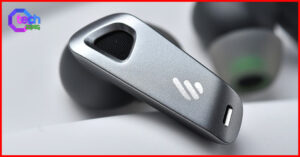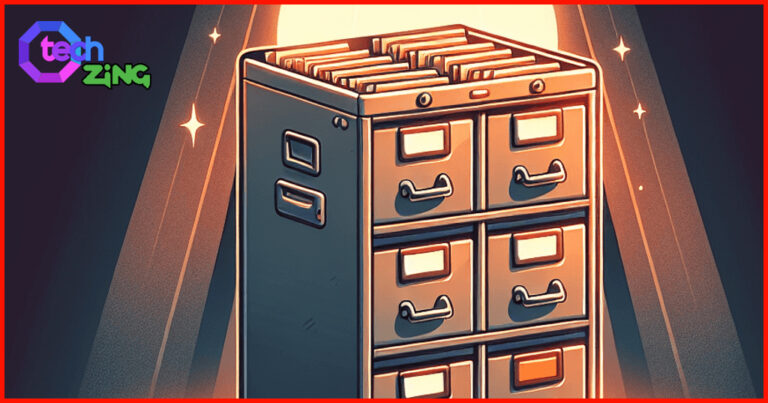Although DDR5 memory has been launched for more than two years, DDR4 memory is still the mainstream choice in the market due to its excellent compatibility and low price. Let’s read some about DDR4 vs DDR5.
Since DDR5 memory was initially launched on the market, both motherboards and DDR5 memory that support DDR5 were relatively expensive. Nowadays, DDR5 memory is getting cheaper and cheaper. Many friends who have newly installed a computer may have this question. Should they choose DDR4 memory or DDR5 memory for installation?
Especially for gamers, is there a big difference between DDR4 and DDR5 memory for playing games? Let’s share the differences and purchasing suggestions between DDR4 and DDR5 memory.

Let’s first understand DDR4 and DDR5 memory. What are the differences between them?
1. Memory frequency
Memory frequency is the most intuitive difference between DDR4 and DDR5 memory. DDR5 has doubled the frequency compared to DDR4 memory. When DDR4 was launched, the memory frequencies were only 2133 and 2400MHz. Currently, the mainstream frequencies are 3200MHz and 3600MHz. At this stage, the flagship DDR4 memory frequency can reach 4266MHz or higher. The starting frequency of DDR5 memory is 4800MHz, which has basically reached the limit of DDR4 memory. At present, the mainstream choice of DDR5 memory is generally 5200MHz-6000MHz, and the current flagship level has reached 8000MHz.
2. Memory bandwidth
DDR5 memory bandwidth transmission speed is faster. Taking the DDR4 3200 frequency as an example, the bandwidth is 25.6GBps, and the bandwidth of the DDR5 4800 frequency is 38.4GBps.
3. Working voltage
DDR5 has a higher energy consumption ratio than DDR4! The operating voltage of DDR4 is 1.2V, while the operating voltage of DDR5 drops to 1.1V, and the power consumption is reduced by 8%, which means more power and energy saving.
4. PMIC power management chip

The PMIC power management chip of DDR4 memory is integrated on the motherboard. The difference is that DDR5 memory integrates the PMIC power management chip onto the PCB board of the memory. It is the brain of the intelligent voltage regulation system, monitoring the current while promoting voltage ramp and Level configurability reduces the burden of motherboard power management.
5. Single particle density
DDR5 has a higher density per chip. Only a single chip can reach 16GB capacity, while DDR4 has only 4GB capacity per chip. Therefore, the memory capacity of DDR5 will be larger. A single memory can even reach 128G, and even 256G is normal. However, based on current demand, the memory demand in the consumer market is not that large yet.

6. ECC memory error correction mechanism
DDR5 memory has a new ECC error correction function, but this ECC is not that ECC. Only the On-die Ecc error correction function is added to DDR5 memory. It can be understood as a low-profile version of ECC. On-die Ecc can only correct errors. Inside the memory, often referred to as Ecc, there are usually additional particles allocated to the Ecc function, which can correct errors in communication during operation.
The ECC function on DDR5 memory is mainly to improve the stability of the memory and reduce the probability of blue screen.
7. Single memory to achieve dual channels
Generally speaking, only two DDR4 memories can achieve dual channels, while a single DDR5 memory can achieve dual channels, but it is not a true dual channel and can be understood as a pseudo dual channel.
We can understand that originally DDR4 memory only has one 64Bit channel to transmit data, and the dual channels are 2x 64bits. The DDR5 memory channel is split into two 32Bits, which achieves the effect of dual channels in a single memory. If you want to achieve the ideal dual-channel value, you still need two memory sticks to form a dual channel.
8. XMP3.0 technology
XMP3.0 technology is Intel’s one-click overclocking technology for DDR5 memory. It actually stores optimized preset parameters. Compared with XMP 2.0 technology, the latest XMP 3.0 technology has 5 configuration files, of which these 5 The configuration file includes 3 fixed configurations and 2 player-defined configurations, whose names can be modified, and the voltage on the module is controllable. Currently, some manufacturers have launched visual overclocking software, which lowers the overclocking threshold.
9. Different interfaces
DDR4 and DDR5 have a slight change in the position of the foolproof port, which means that the two are not compatible with each other. Therefore, if you want to choose DDR5 memory for installation, the motherboard must support a DDR5 slot to be compatible with DDR5 memory, and it cannot be used in a DDR4 slot.
10. Timing
Timing is the pain point of DDR5 memory. Since the frequency of DDR5 memory has increased sharply and reduced power consumption, in order to ensure the stability of the memory, higher timing can only be set. Take DDR4 2666 frequency memory as an example, the timing is generally at CL17-CL19, and DDR5 4800 frequency has generally reached CL40. The higher the memory timing, the higher the delay. Therefore, for some games that are more sensitive to memory delays, DDR4 memory will have more advantages.
Let’s take a look at gaming. Is there a big difference between DDR4 and DDR5 memory for gaming? Let’s take a look at the data.
Testing the game at 2K resolution with the highest image quality setting, we can see that the game performance gap between DDR4 and DDR5 is not big, there is a winner and loser, and there is no big gap between the two in terms of frame rates. .
Suggestions for purchasing DDR4 and DDR5 memory:
Although DDR5 memory has higher frequency and bandwidth, it does not bring significant improvements in games due to high latency. Therefore, for gamers, if they are pursuing a certain cost-effectiveness, they can still consider DDR4 memory. After all, motherboards and memory are more affordable.
But if you have productivity needs, I personally recommend choosing DDR5 memory. After all, DDR5 memory has a large bandwidth advantage and is very helpful for productivity. It is not recommended to buy 4800MHz DDR5 memory. Although it is cheap, its performance is relatively poor. Personally, I recommend starting at 5600MHz, preferably 6000MHz or above.























[…] […]